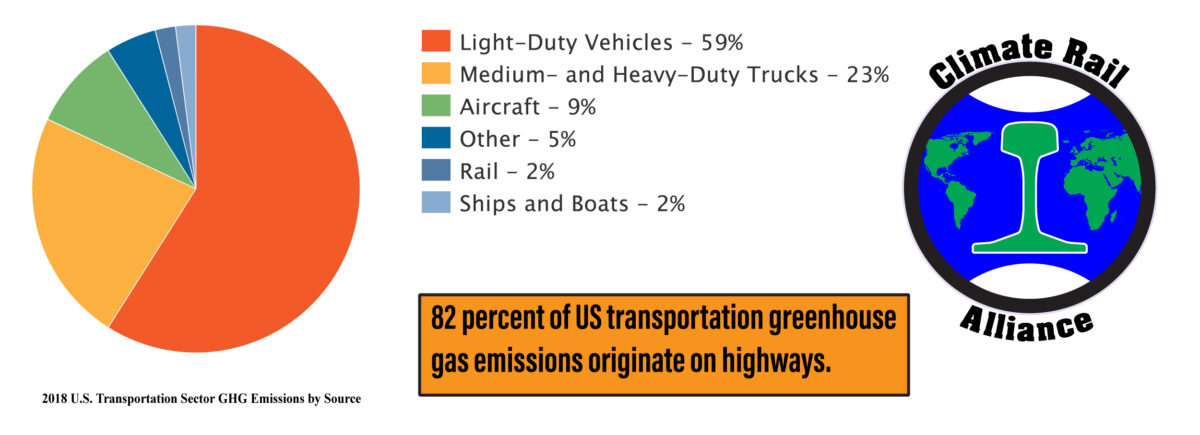My comment on “A new Seattle-area airport isn’t feasible — let’s focus on conservation and high speed rail” published in “The Cascadia Advocate” June 10, 2023:
The apparent frenzy over finding an airport location matches the 1950s-60s frenzy of freeway building and ‘visionary’ plans for ever more to come (such as the, fortunately abandoned, 1950s Seattle ‘ring road’ plan).
There is an important element in the search for an expanded, or a greenfield airport location that has not been considered. Climate change – it’s real. We can regularly see, smell, feel, and taste it. The UN International Panel on Climate Change has warned, in many consecutive reports published over a period of more than a decade, that greenhouse gas emissions must be reduced by about 50 percent by 2030 to avoid irreparable climate damage. 2030 is less than seven years away and there has been little meaningful change in Washington transportation planning. There is only the appearance of trying to mitigate conditions leading to climate change, while actually changing nothing in terms of our habits, expectations, and policies that are a significant cause.
The ability to continue as we are presently, without significant and worsening effects is unlikely. Meaningful action against climate change involves more than replacing internal combustion highway vehicles with EVs. It involves more than reduced aircraft emissions. It involves more than appropriating hundreds of millions in climate funds for an ultra fast bullet train that we might possibly ride sometime beyond 2055. We have been taught by those selling convenience and speed that we need more convenience and more speed. The past 70 years have created the fast-moving, throwaway American society that is the root of the problem.
The desire for speed and convenience is driving the desire for more and bigger highways and more and bigger airports. These are being promoted as needs.
The root of the convenience we want is found in the word that describes so much of what we use: disposable. The world is swimming in the sea of disposable things and the disposable packaging they came in. The more things we dispose of, the more things we want. The more we want, the more must be shipped.
We have also been conditioned to do more and go faster to achieve it. That’s the selling point of super or ultra fast high speed rail programs. “Imagine if you could get from Seattle to Portland in only an hour.” The statement dodges the question of ‘why would I need to do that?’
The desire for more things is accompanied by the desire to get them quickly. Add a few dollars for second or next day shipping. Get it now! That need for almost instant gratification leads to the ever-increasing use of air freight, one of the justifications that has been offered for a new airport.
The current Amtrak Cascades intercity rail service is faster than flying between Downtown Seattle and Downtown Portland. The unfulfilled Long Range Plan for Amtrak Cascades (2006) provides for hourly trips of two hours thirty minute duration between Seattle and Portland and a similar travel time between Seattle and Vancouver BC. Why must we make the trip in an hour and why must we wait for decades to do it? Why is the effect of climate change being ignored in the promotion of a 30 year long wait for those one hour trips to become reality?
A great many air freight shipments could be made by rail if the US once again valued the dependable package freight service it once had. Maybe there isn’t really the need for overnight or second day shipment at the cost of more and larger airports to satisfy the demand. A little patience in receiving the things we buy would go a long way toward eliminating the airport capacity problem.
Trains are an effective climate emergency response. We must do all we can to improve rail service as quickly as possible and reduce dependence on highway and air travel.
We must concentrate our efforts on doing the most with what we have as quickly as possible. Ordinary passenger trains often traveled at 100 mph into the 1950s. Most routes had at least two fast passenger trains per day. Passenger trains carried express freight. Freight trains were faster than they typically are now. Passenger and freight service were more reliable.
Immediate efforts should be turned to completing the Long Range Plan for Amtrak Cascades, and upon directing the effort for a new high speed, cross-Cascades route between Seattle and Ellensburg-Yakima.
The dream/vision of super speed can come after we have fixed the immediate problems.
The dream/vision for a new greenfield airport should be relegated to being another failed idea of the past, like the Seattle ‘ring freeway.’Thomas White, co-founder, Climate Rail Alliance info@climaterailalliance.org
